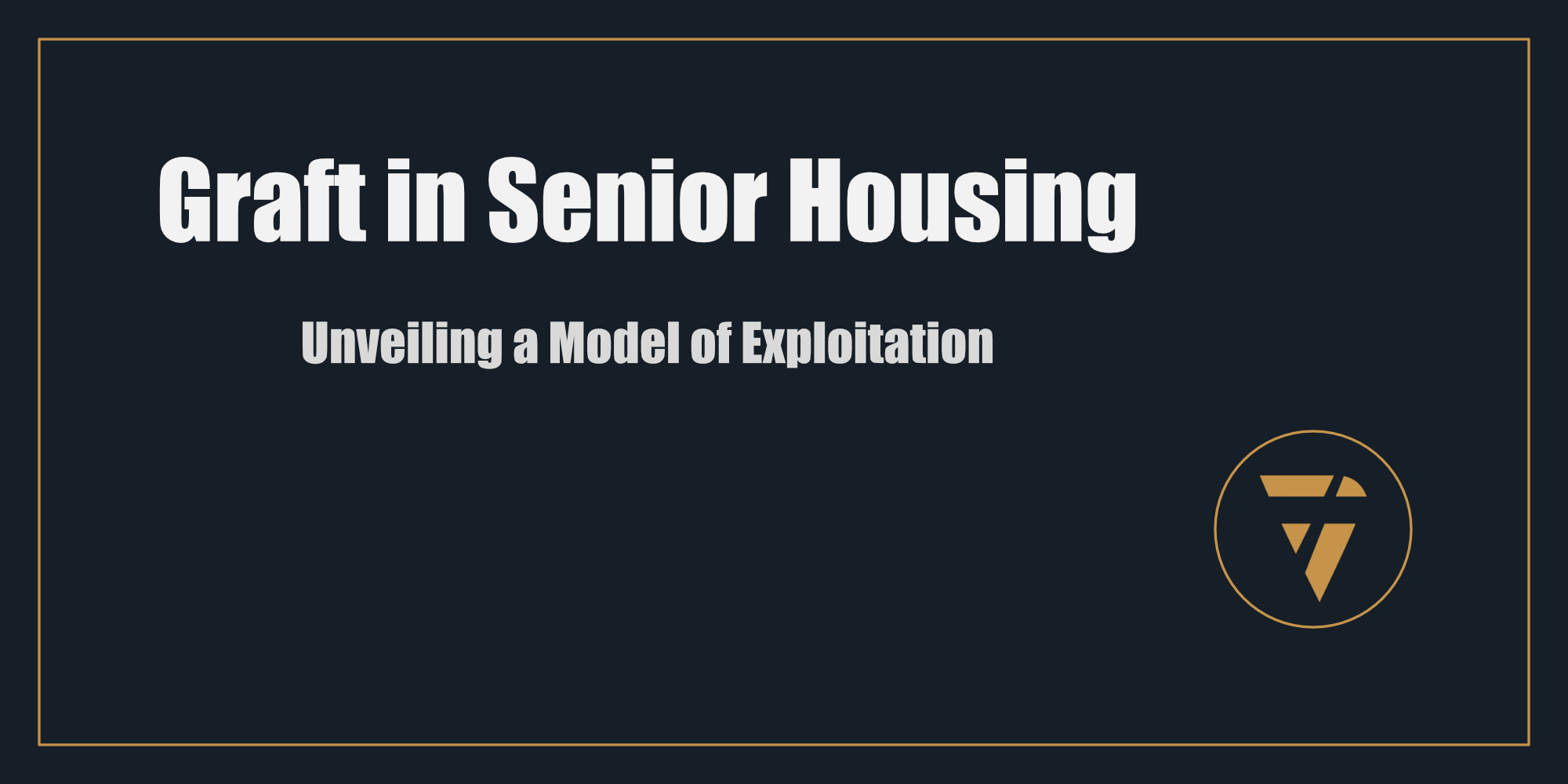Graft in Senior Housing
Unveiling a Model of Exploitation

What happens when the promise of senior care transforms into a meticulously engineered pipeline for private gain? In this article, we uncover the mechanisms behind a senior housing model that monetizes aging populations while masking itself as community service.
Across the country, senior housing developments are marketed as solutions for the aging population. Behind the glossy brochures and noble promises, however, a recurring business model exploits local communities under the guise of addressing care needs. This model benefits a select few while offloading risk onto residents, local investors, and even governments. Let’s explore how this approach works, from capital raising to operational tactics, and why its inherent conflicts demand scrutiny.
1. The Business Model: An Anatomy of Graft
Senior housing projects frequently present themselves as age-in-place utopias. The reality? These ventures often follow a formula:
- Raising Local Capital: Developers recruit local "owners" to generate funds, leaning heavily on community trust. Investors are courted with the promise of returns or community contributions, while the funds predominantly cover consultancy fees and planning costs.
- Consultants and Developers First: Consulting fees, retainers, and performance bonuses are drawn upfront, often at rates exceeding market norms. In one recent project, consulting fees alone exceeded $770,000—entirely funded by investor contributions.
- Opaque Ownership and Control: The corporations behind these projects are frequently controlled by external stakeholders, leaving local "owners" exposed to financial risk. This structure ensures the local participants have minimal recourse should the project fail.
2. The Revenue Engine: Exploiting Care Contracts
Once built, these facilities often function under dual public-private partnerships, where:
- Government-Backed Renters: Units are rented to provincial governments to address senior care deficits, guaranteeing stable, taxpayer-funded income streams.
- Layered Costs: Operators charge residents for care services far exceeding the level provided. For instance, facilities delivering basic care (costing ~$1,200/month) may bill for higher-tier services at rates upwards of $8,000/month.
- No Local Access: Despite being marketed as community resources, many developments restrict unit sales to external investors, ensuring ongoing rent-driven profit rather than local homeownership.
3. Consulting-as-Control: The Role of Intermediaries
Organizations act as intermediaries, offering “management” services. These consultancies often exist only as skeletal entities with a phone number and email address. Their roles include:
- Overseeing capital raises for developers.
- Ensuring that consulting fees flow uninterrupted.
- Administering operations under contracts that are heavily skewed in favor of the consultancy, often leaving local owners powerless.
4. The Social Cost of Profit Extraction
Beyond financial exploitation, this model strains the broader community fabric:
- Loss of Trust: Promises of age-in-place housing, tailored to local needs, are often unmet.
- Community Displacement: With units owned by absentee investors, seniors may face skyrocketing costs, driving them away from their home communities.
- Lack of Oversight: The interplay of private ownership and public funding invites corruption, as operators bill excessively for minimal services, prioritizing profit over care quality.
Actionable Takeaways:
To counteract this harmful model, communities and policymakers must:
- Demand Transparency: Insist on open books for all capital-raising activities and operational expenses.
- Prioritize Local Ownership: Mandate a minimum percentage of units to be owned by local residents or organizations.
- Strengthen Oversight: Introduce third-party audits for facilities receiving public funds to ensure compliance with care standards.
- Encourage Public Alternatives: Expand public investment in senior housing to reduce dependence on profit-driven models.
This system thrives on obfuscation and a lack of accountability. As community members, advocates, and policymakers, we must challenge these practices and demand better for our seniors. The question is not whether we can act, but whether we will.
Let’s redefine senior housing as a service, not an exploit. Subscribe for in-depth insights, or reach out to share stories of how your community is tackling the challenges of ethical senior care.
This Substack is reader-supported. To receive new posts and support my work, consider becoming a free or paid subscriber.
This is what I’m working on. Tell me what you think, I enjoy the conversation! Subscribe and follow the work in real time.
Thanks!
B
Senior housing or financial shell game? Some developments promise care but deliver exploitation—draining local investors while overcharging residents. Profit shouldn’t come at the cost of dignity.
PS -





